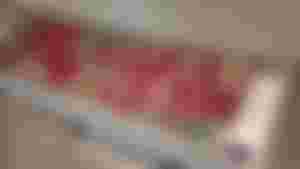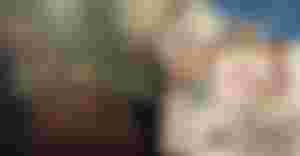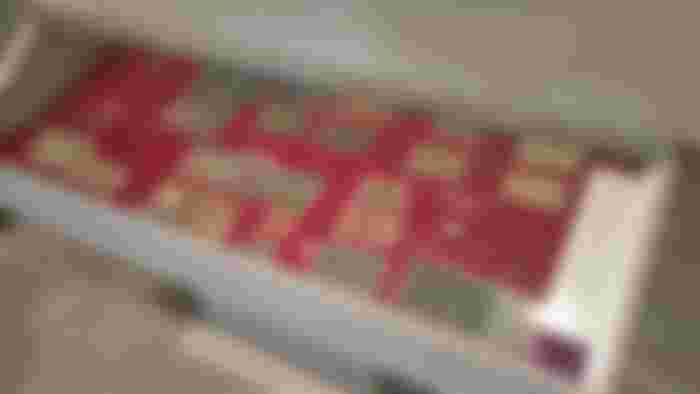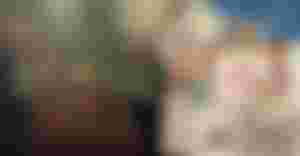The "Money of the Kingdom of Yugoslavia" was opened in the Synagogue Gallery, where coins and banknotes dating from the middle of the 19th century until the beginning of the Second World War are exhibited. The author of this unique exhibition, Stanislav Pavlović, curator and historian of the National Museum, points out that his wish was to present all the money that was in circulation at the time.
The exhibition "Money of the Kingdom of Yugoslavia" represents the money of the National Museum that has been collected from the creation of the museum to the present day. Here at the exhibitions, you can notice three wholes. Money, its very origin and the beginning of minting the first Serbian money - money in 1868, until the beginning of the Second World War, when the National Bank was temporarily abolished and then the printing of dinars of the Kingdom of Yugoslavia stopped ", says Pavlović.
Pavlović adds that the first Serbian money had a great value.
"All in all, there was both metal and paper money in that period. He is distinguished by his great value during that time. The dinar was on par with other strong currencies, such as the dollar and the franc. And the very beginning of our minting was reflected in the similarity with French money ", Pavlović points out.
The tradition of making beautiful money that will serve as a foreign currency continues during the Kingdom of Yugoslavia.

"The engravers were mostly from the Viennese and French mints. "Our money, until the beginning of the First and Second World Wars, was first made in Vienna, and then between the two wars in France, in the mint of their bank," said Pavlović.
The practice was to change the faces and faces of the money with the change of the ruler.
"Various excuses were used to replace that money, but in a way, it was a tradition then. "Although the characters of the rulers changed on the money, that money was still in circulation, as it is today, which we can notice that the banknotes that were printed in the previous state are still partially in circulation today," Pavlović concluded.
All interested visitors will be able to visit the exhibition "Money of the Kingdom of Serbia" until the end of March. The working hours of the Synagogue Gallery are from Tuesday to Friday from 10 am to 4 pm, on weekends from 10 am to 3 pm, and on Mondays, it is closed to visitors. Free entry.

The money of the Kingdom of Yugoslavia, from the first half of the 19th century until the beginning of the Second World War, will be exhibited in the Synagogue Gallery. The author of this unique exhibition is Stanislav Pavlović, curator and historian of the National Museum of Niš. The grand opening is scheduled for 1 pm, and interested visitors will be able to visit the exhibition until the end of March.
The collection of money of the New Age was formed by the founding of the National Museum in 1933, with samples provided by the founders of the museum from their private collections. Over time, the collection was enriched through gifts and redemptions of 2,500 pieces of metal and paper money, which were made in the period from the 16th to the 20th century, 224 pieces represent the domestic currency dinar and pair, which began to be made during the reign of Prince Mihajlo Obrenovic in 1868. years until the period of occupation of the Kingdom of Yugoslavia during the Second World War. Most of this money came to the Collection through gifts, in the period from 1933 to 1976, and through redemption in the period from 1977 to 2009.
"The metal and paper money that will be presented to the public at the exhibition in the Synagogue Gallery originates from the territory of Nis and its surroundings and testifies to the turbulent history of this area from 1868 until the beginning of the Second World War." Through the chronological presentation of the development of the dinar as a coin, a part of the monetary history of our country is presented, which represents continuity in the development of the monetary system that has not been interrupted until today, "said the National Museum in Nis.
Metal and paper money, which by its standards, appearance and value matched foreign currencies and was accepted as a valid international means of payment in the period from 1868 to 1941, was temporarily abolished when the National Bank as an issuing institution in the occupied state ceased to works, and the occupying authorities who divided the territory of the Kingdom of Yugoslavia wanted to suppress the dinar from the use by issuing their own currency.
The working hours of the Synagogue Gallery are from Tuesday to Friday from 10 am to 4 pm, on weekends from 10 am to 3 pm, and on Mondays, it is closed to visitors.
Free entry.


Great article thanks for sharing